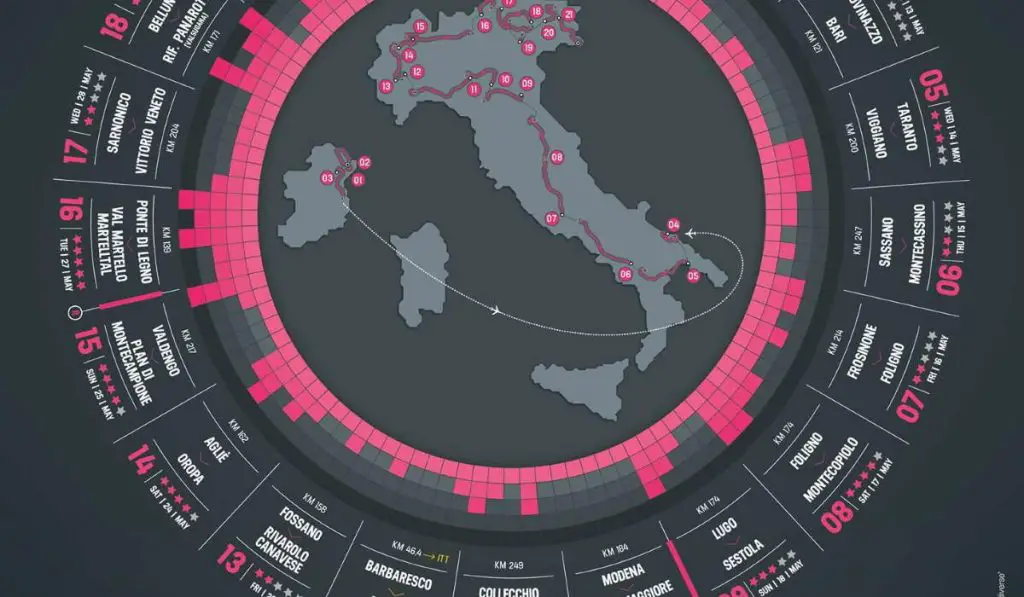Giro d’Italia 2014 stage 17 is a 208 km flat stage from Sarnonico to Vittorio Veneto.
Giro d’Italia 2014 stage 17 quick info
- DATE: May 28, 2014, Wednesday
- STAGE TYPE: Flat
- START-FINISH: Sarnonico (954m) > Vittorio Veneto (132m)
- LENGTH OF THE COURSE: 208.0 km
- DIFFICULTY:

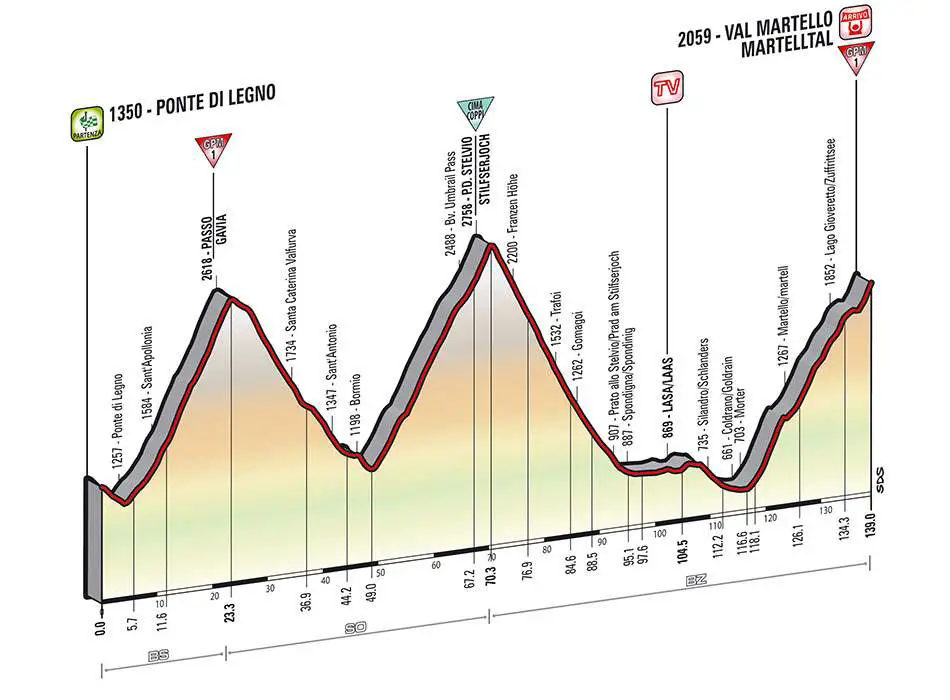
Previous stage: Giro d’Italia 2014 Stage 16 details
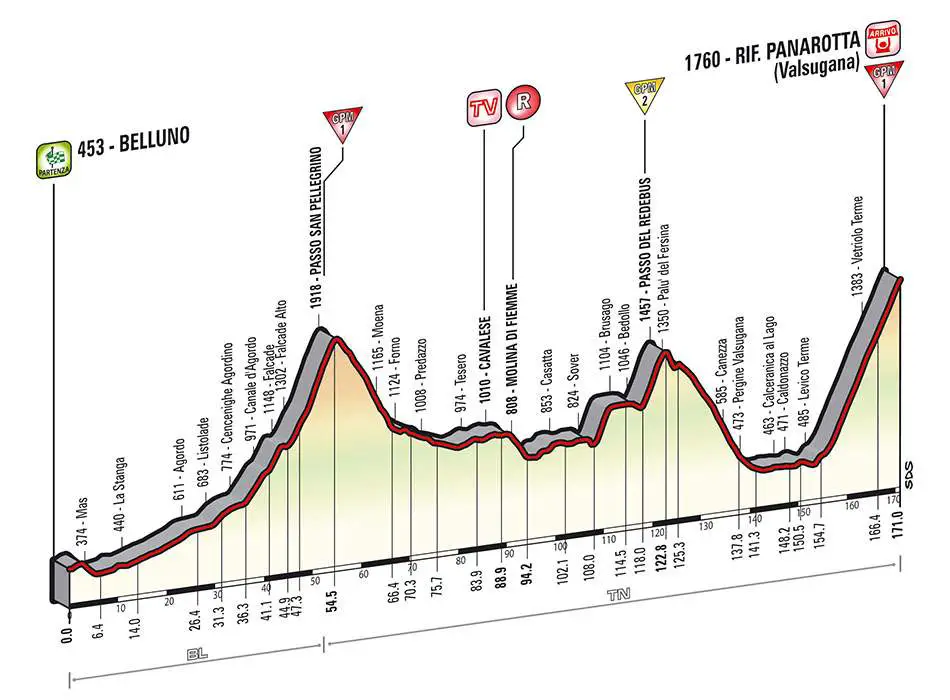
Next stage: Giro d’Italia 2014 Stage 18 details
Giro d’Italia 2014 stage 17 profile
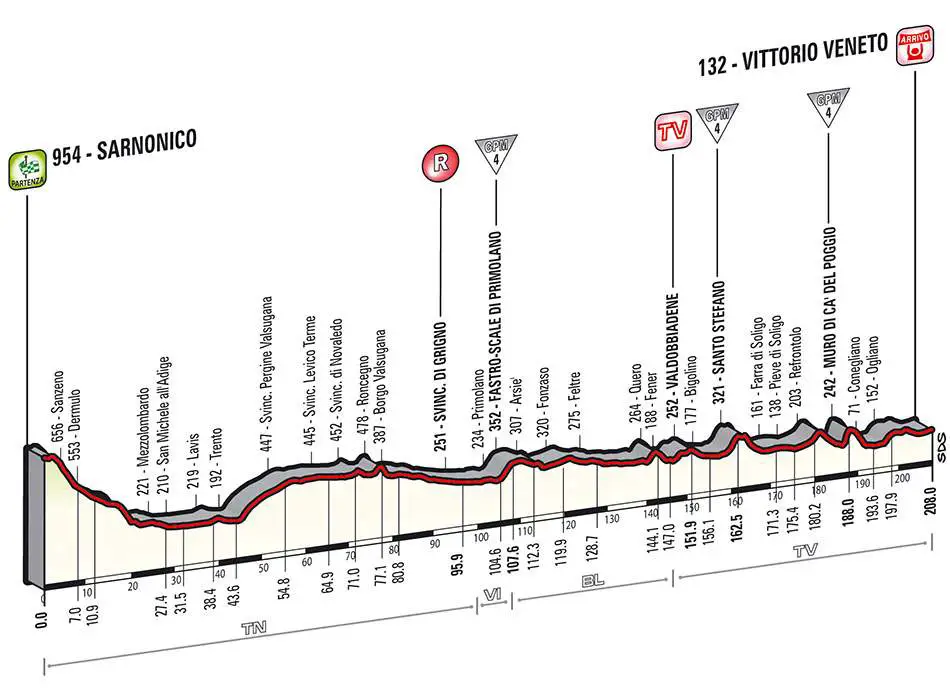
Last kilometers
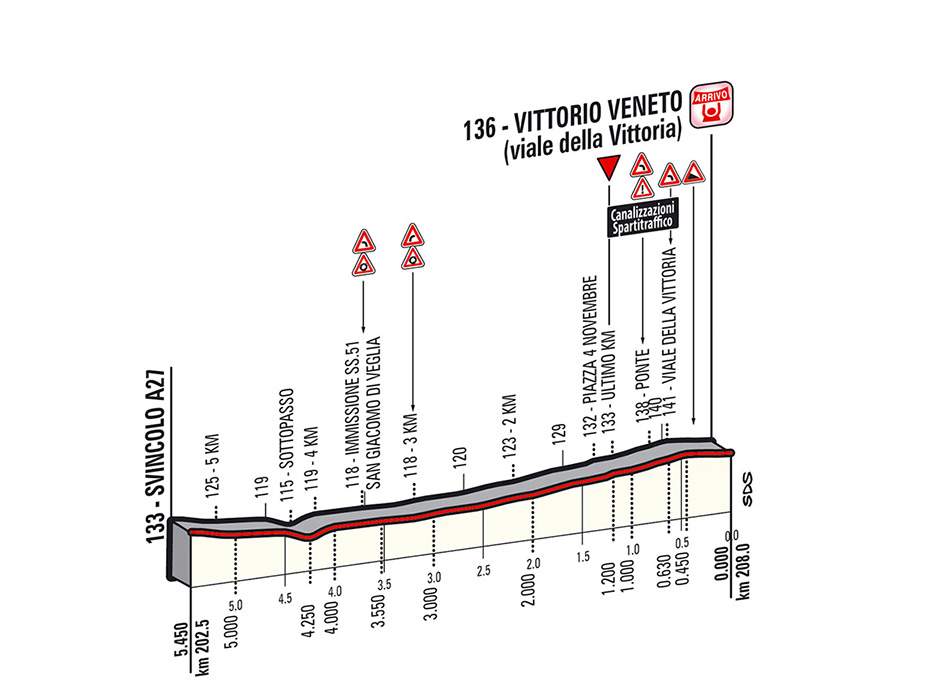
Giro d’Italia 2014 stage 17 map
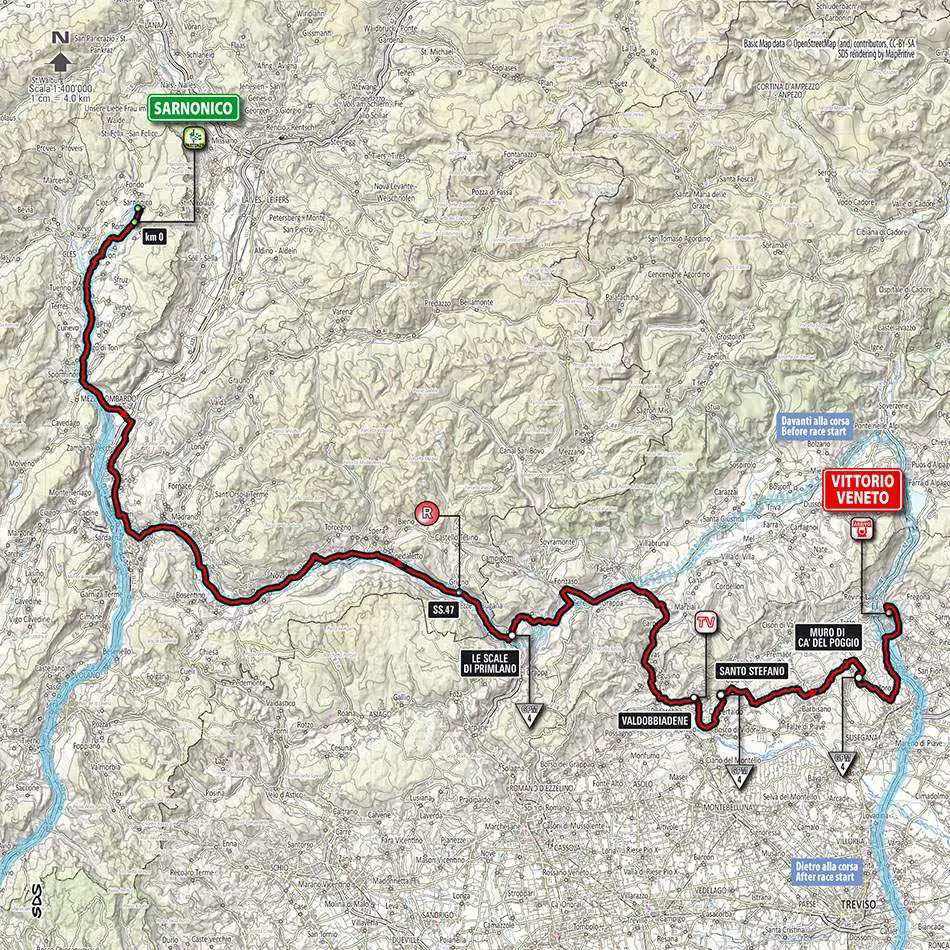
Giro d’Italia 2014 stage 17 start: Sarnonico
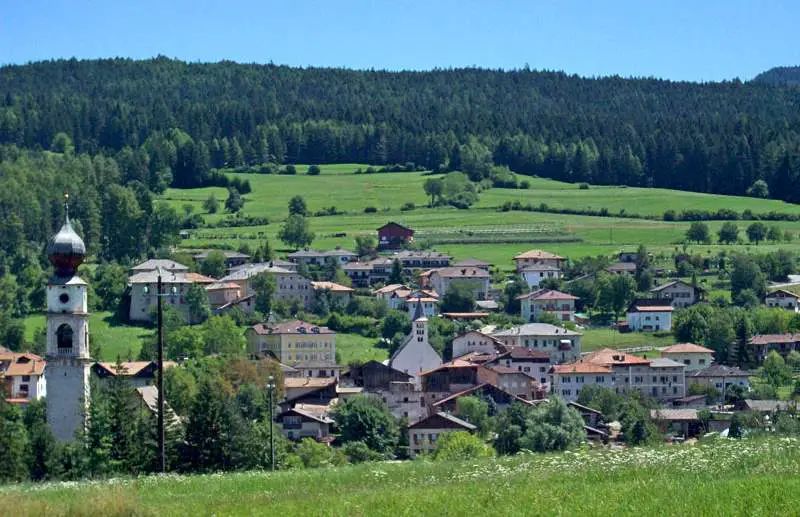
Sarnonico is a comune (municipality) in Trentino in the northern Italian region Trentino-Alto Adige/Südtirol, located about 40 km north of Trento. As of 31 December 2004, it had a population of 696 and an area of 12.1 km2.
Monuments and places of interest in Sarnonico
- Chiesa di San Lorenzo (Church of San Lorenzo): It is a Gothic-style church built in the 12th-century. It was enlarged in 1597, lengthened in 1783, and restored in 1864, 1889, and 1958. Its entry, built in 1760, is in Baroque style.
- Chiesa della Beata Maria Vergine (Church of the Blessed Virgin Mary): Located in the town center, it was built in the 13th century. The exterior is austere and in Romanesque style. The façade is slender with a Renaissance ashlar entry. The bell tower surmounts the facade and is decorated with mullioned windows and three mullioned windows. The roof is made of shingles. On the south side, there is a sundial.
- Chiesa San Giorgio Martire (Church of San Giorgio Martire): The date of build is unknown – its first documentary reference dates back to 1387 when Cardinal Nicolò da Venezia released the indulgence in favor of its restoration. The bell tower was built in 1773 and restored in 1808.
Giro d’Italia 2014 stage 17 finish: Vittorio Veneto
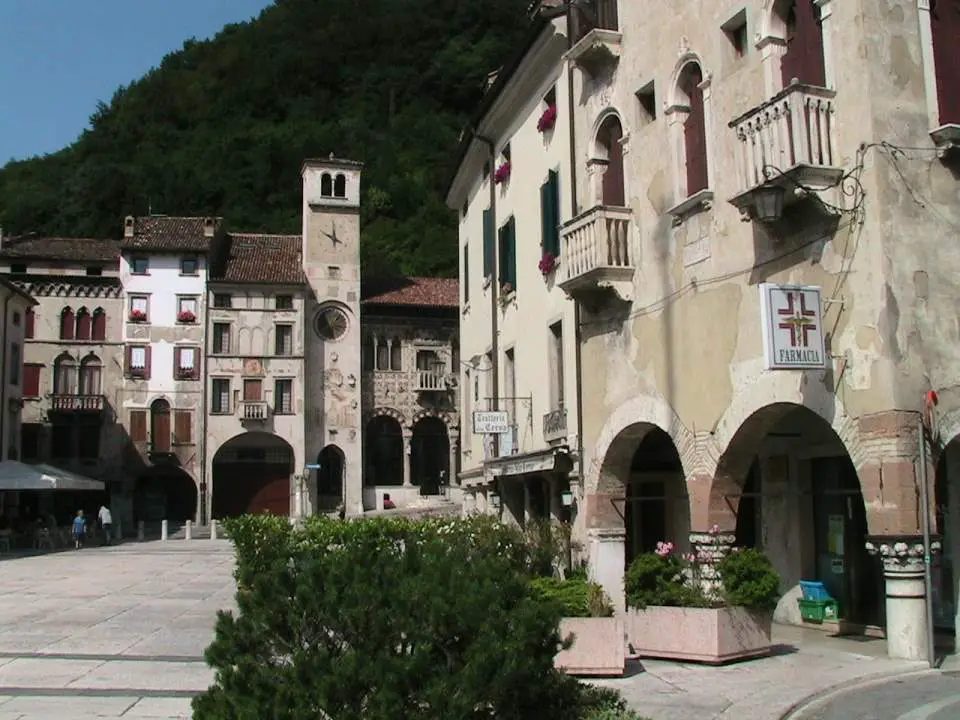
Vittorio Veneto is a city and comune situated in the Province of Treviso, in the region of Veneto, Italy, in the northeast of the Italian peninsula, between the Piave and the Livenza rivers.
The city is an amalgamation of two former comuni, Cèneda and Serravalle.
The Meschio River, whose source is located in the Lapisina Valley, a few miles north of the city, passes down through the town from Serravalle through the district that bears its name. The north of Vittorio Veneto is straddled by mountains including the majestic Col Visentin.
To the east is the state park and forest of Cansiglio which summits at Monte Pizzoc; to the west, a hill region including Valdobbiadene, where Prosecco wine is produced; and to the south is the commercial town of Conegliano.
During the First World War, Vittorio was occupied by Austro-Hungarian forces. In October 1918, Vittorio was the site of the last battle between Italy and Austria-Hungary during World War I. It led to the victory of Italy over the Austro-Hungarian Empire (Austrian-Italian Armistice of Villa Giusti) effective on 4 November 1918.
The word “Veneto”, was attached to the city’s name in 1923. Subsequently, many streets in other parts of Italy have been named Via Vittorio Veneto.
The Italian victory at the Battle of Vittorio Veneto led to the town lending its name as a military honor. Thus, in the 1930s, a battleship was named Vittorio Veneto.
In the 1960s, a flight deck cruiser, the flagship of the Italian Navy, was given the same name. In 1968, a military medal called the Order of Vittorio Veneto Order (Ordine di Vittorio Veneto) was awarded to Italian veterans who had participated honorably for at least six months during the First World War.
Monuments and places of interest in Vittorio Veneto
- Cattedrale di Vittorio Veneto (Vittorio Veneto Cathedral): Probably, a small church existed on the site even before the arrival of the body of San Tiziano di Oderzo (Saint Titian of Oderzo, a 7th-century bishop of Opitergium -Oderzo-, in the Province of Treviso), which sanctioned the transfer of the diocese from Oderzo and the erection of the cathedral. Destroyed by the Trevigiani in 1199 while they stole the remains of the patron saint, it was rebuilt in Romanesque style. The building maintained this aspect until the mid-eighteenth century, when it was rebuilt in a neoclassical style based on a design by Ottavio Scotti: substantially completed in 1773, it was consecrated on September 26, 1824, but was definitively completed only in the fifties of the twentieth century. Inside are preserved precious paintings ranging from the sixteenth to the seventeenth century (including a story of San Tiziano di Pomponio Amalteo). The remains of St. Titian, patron saint of the city are preserved in the crypt. The organ was built by the Ruffatti company of Padua in 1949.
- Duomo di Santa Maria Nova – Serravelle (Cathedral of Santa Maria Nova- Serravelle): It was built in the early 14th century and then rebuilt in 1776. The main altarpiece, Madonna with Child in Glory and Saints Andrew and Peter, is by the famous Italian renaissance painter Tiziano Vecellio (Titian, c. 1488/90 – 27 August 1576).
- Centro storico di Serravalle (Historic center of Serravalle): To the north of the city center is the historic center of Serravalle, made up of squares and alleys with magnificent sixteenth-century palaces on the sides, homes of the inhabitants before the merger between Serravalle and Cèneda.
Sources
- Giro d’Italia official website
- Sarnonico on Wikipedia
- Vittorio Veneto on Wikipedia
- Top 18 fastest Paris-Roubaix editions - April 7, 2024
- Col de Tourmalet [Amazing photo from the 1953 Tour de France] - January 11, 2024
- Bernard Hinault and Francesco Moser, 1981 Paris-Roubaix - December 8, 2023

